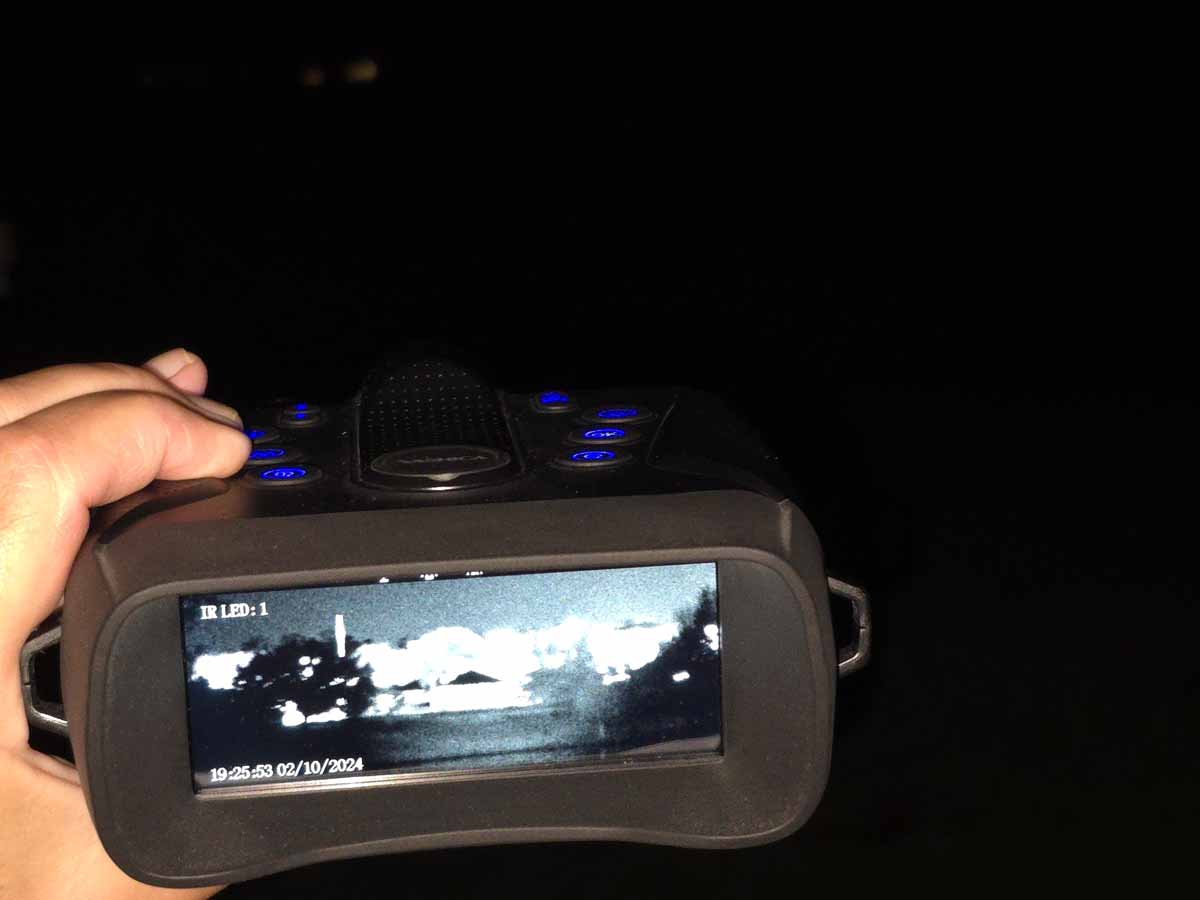
CROWDFUNDING REVIEW – There is a whole world out there when the sun sets that most of us never get to see. As the light fades, so does our ability to make out items. If you’ve ever seen a movie with military commandos, you’ve seen the cool night-vision goggles that they wear that let them see in dark conditions. Those are big, bulky, and crazy expensive. YASHICA, a photography equipment company that has been around since 1949 recently launched a Kickstarter campaign to introduce their new YASHICA Vision night vision device. It allows the user to capture full-color 4K video and 48M images in extremely diminished light as well as providing an infrared (IR) emitter that allows the user to capture black and white 4K video and images in complete darkness. I was sent a pre-production prototype unit to evaluate.
What is it?
This is a night vision device. It is designed to let you see in conditions that are too dark for your eyes to see naturally. It does this in two ways. First, it employs a hyper-sensitive sensor that can image in color down to 0.0037lux. Second, it has a three-level infrared (IR) illuminator that can provide IR illumination out to 600m.
What’s in the box?
Let’s start with the storage case.
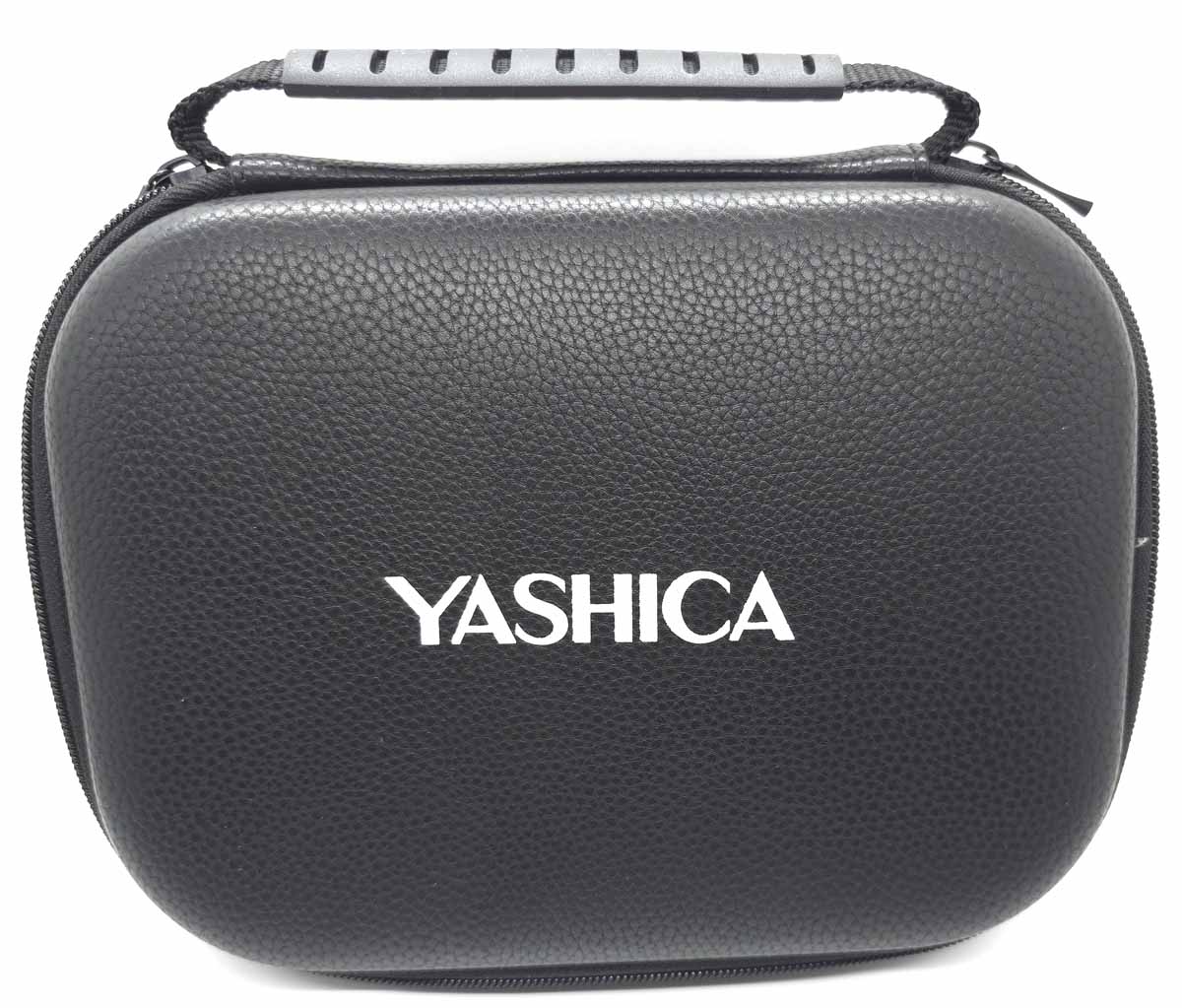
It is designed to safely store and carry the YASHICA Vision device plus accessories.
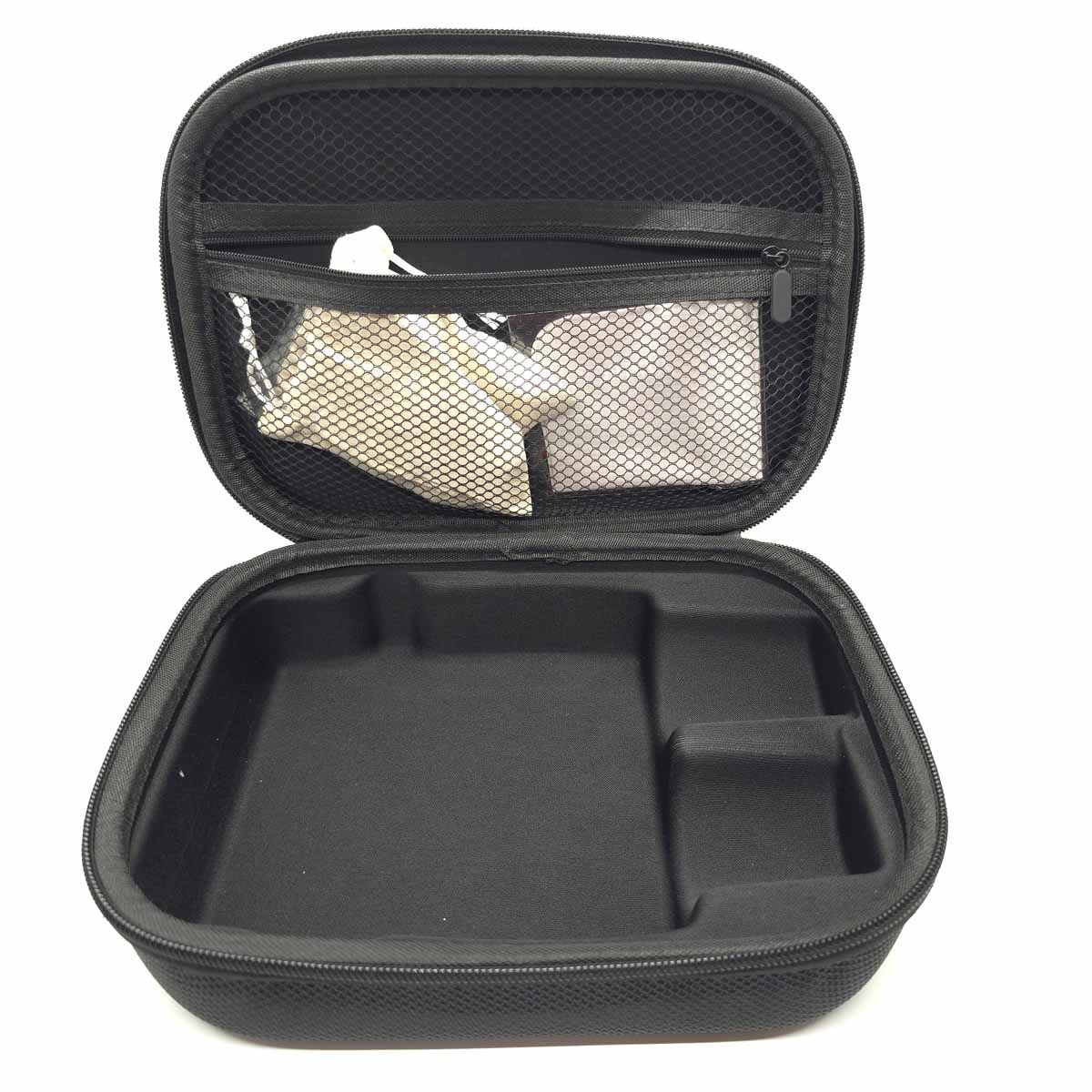
Here’s everything that comes with YASHICA Vision.
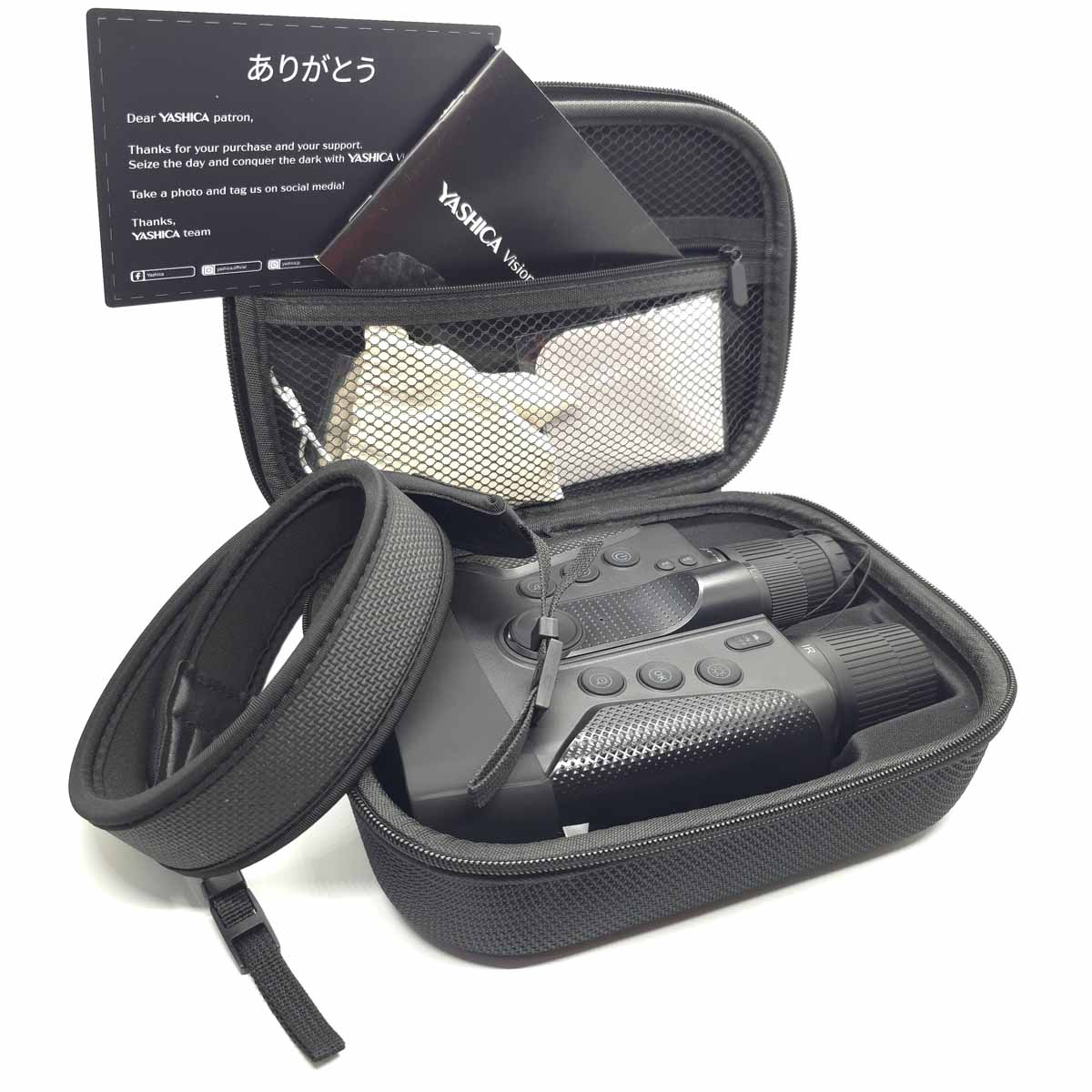
- Night vision device
- Type A to C charging cable (in the tan drawstring bag)
- Cleaning cloth
- Storage case
- Neck strap
- User manual
- Thank you card
If you choose to attach the nicely padded neck strap, you’ll have to give up the storage case as it won’t fit anymore. Seems like an oversight.
Hardware specs
- Dimensions: 144mm x 213mm x 70mm
- Weight: 740g
- Battery: 5000mAh lithium
- Operation time: IR off – 16 hours; IR level 1 – 10 hours; IR level 3 – 5 hours
- Operating range: -20C to 60C
- Controls: Top-mounted buttons, back-lit
- IR illuminator: 850nm
- IR levels: 3 levels
- Objective lens: 25mm – 7-layer coated
- Anti-Reflection Coating: Reduces reflections on the lens surfaces, minimizing flare and ghosting, particularly in bright light sources
- Anti-Glare Coating: Helps to reduce glare caused by direct light
- Water-Repellent Coating
- Dust-Repellent Coating
- Scratch-Resistant Coating: Provides a protective layer that makes the lens more resistant to scratches
- Oil-Repellent Coating
- UV Coating: reduces the impact of ultraviolet (UV) light on image quality
- Aperature: F/1
- Zoom: 5x digital
- Sensor: 1/2.9 GalaxyCore CMOS
- Maximum sensitivity: 0.0037lux
- Focus range: 0.5m to infinity
- Maximum viewing range: 600m
- Video resolution: native 1080P upscaling up to 4K
- Image resolution: up to 58MP
- Display: 4-inch TFT ultra-high resolution full-color
- Screen resolution: 400×900
- Water resistance: IP65 water and dust resistance. – protects against dust ingress and low-pressure water jets (6.3mm) from any direction
- External memory: support for micro SD cards up to 512GB
- Additional features: compass, 0,5W SOS signal light, 1W tactical light
Design and features
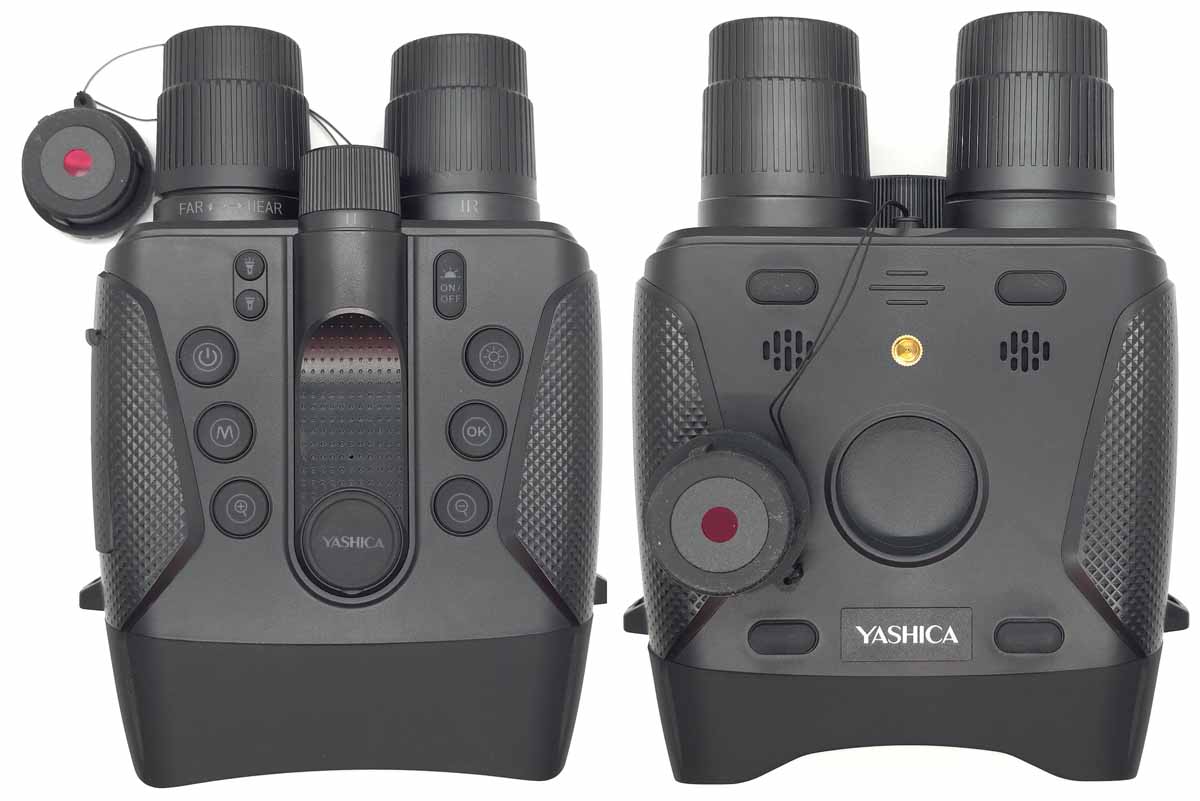
The Vision looks sort of like binoculars, except what looks like the eyepieces are actually the lens and IR emitter. You look at the screen on the back of the device.
The photos above show the top and bottom of the unit. The controls are all on the top. The bottom has a storage spot for the IR-cut filter, a threaded tripod mount, and non-slip rubber feet.
The buttons on the top are backlit. The backlight can be turned on and off with one of the buttons. You can also see the two lugs for the neck strap sticking out. The IR-cut filter is attached with a string.
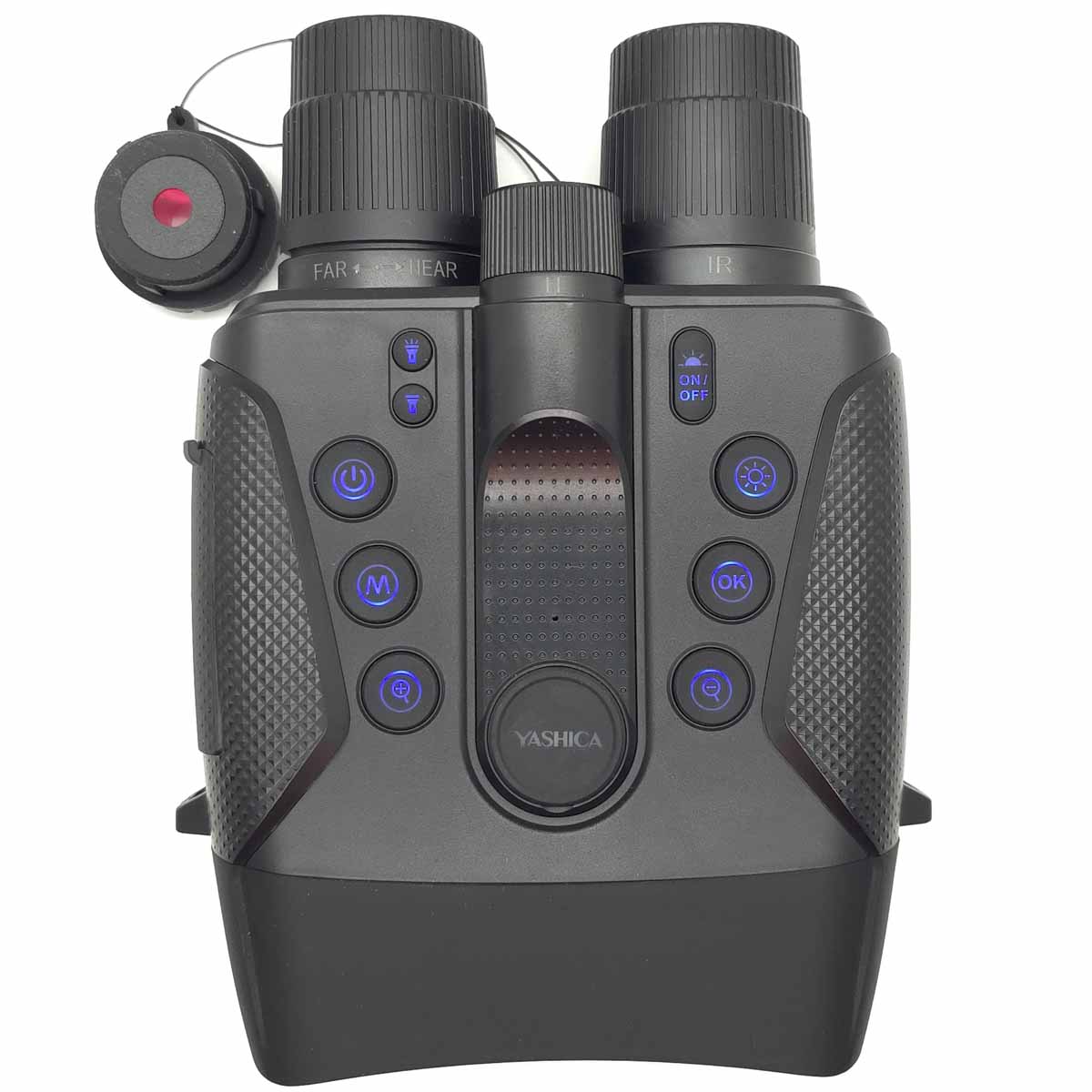
Under that round YASHICA label, they’ve hidden a compass.
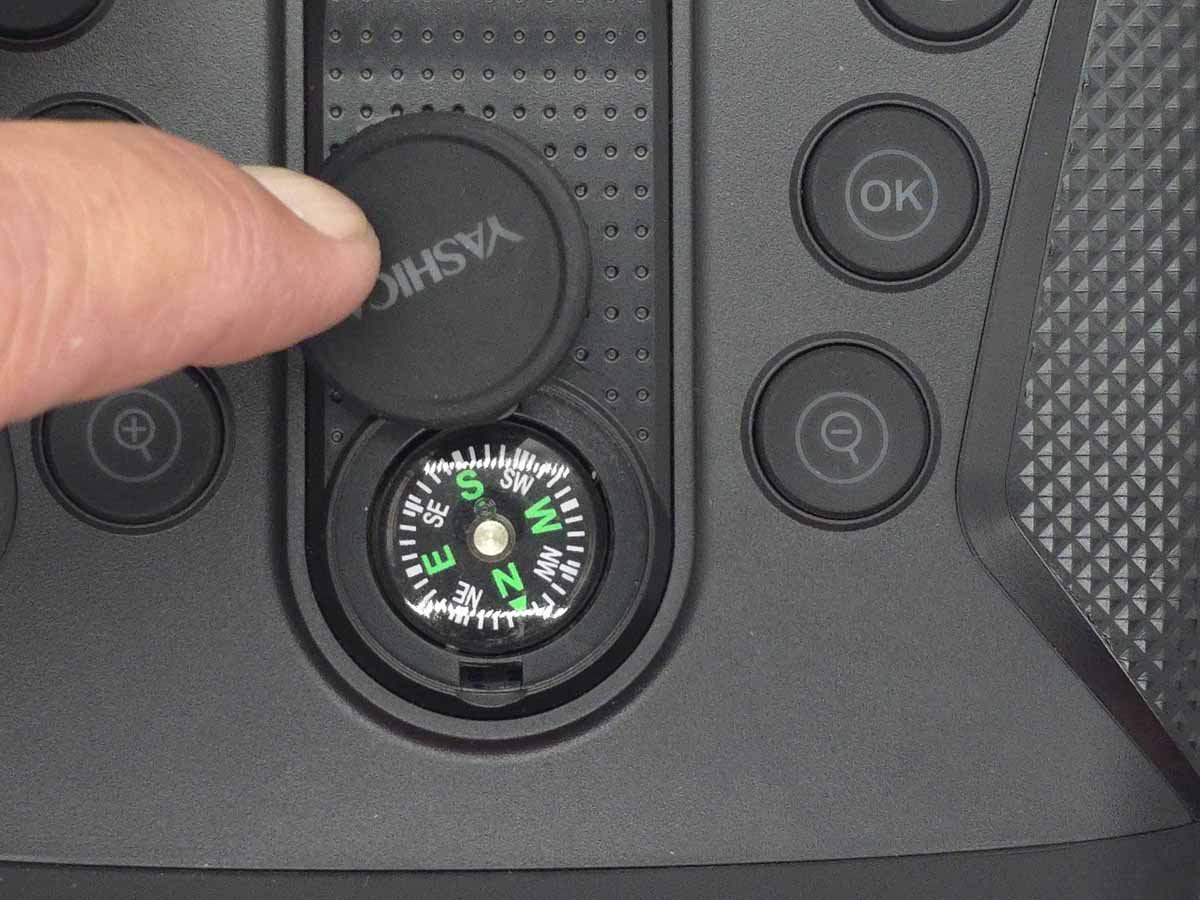
The inside of the top of the box details all the controls.
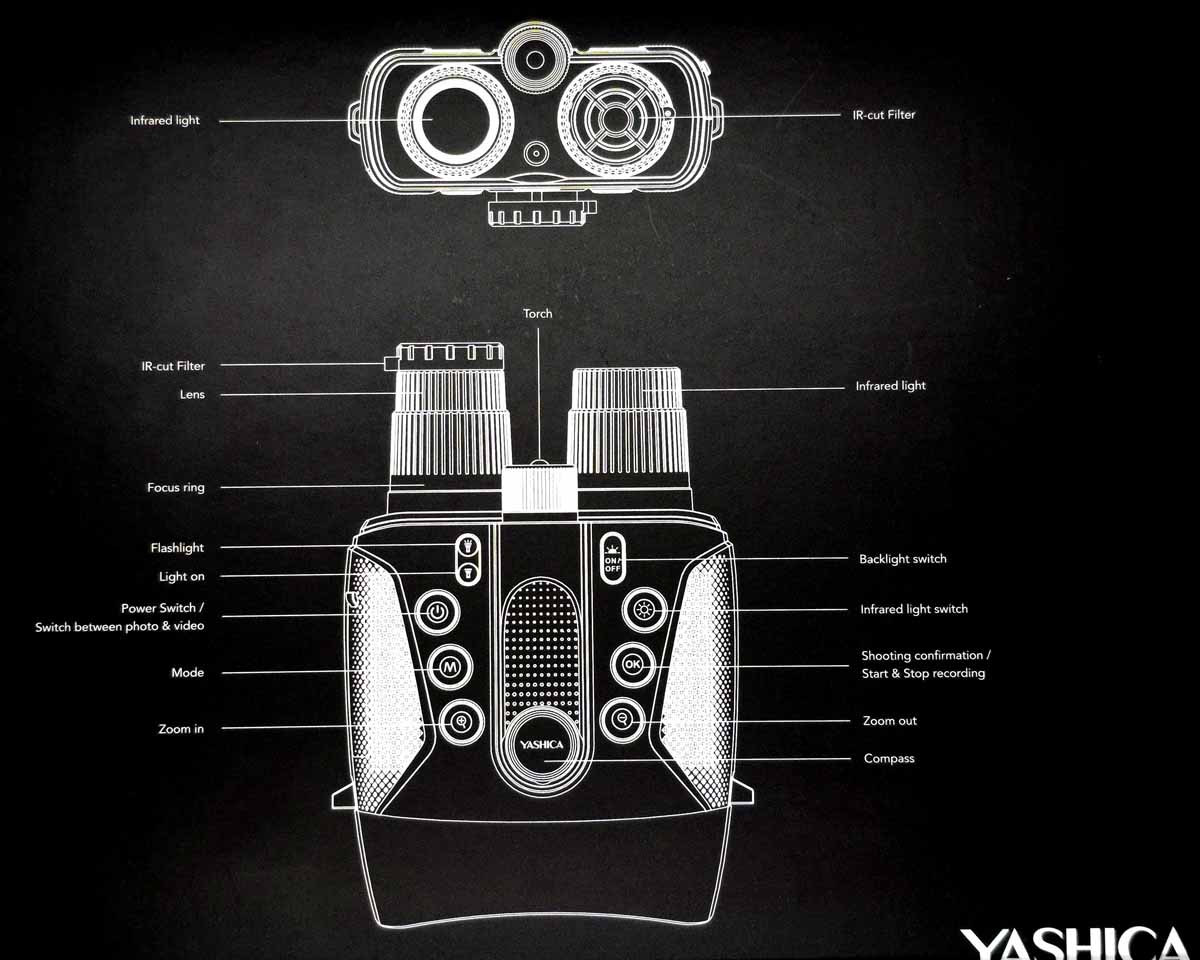
Many of the buttons have multiple functions, depending on whether you click them or hold them.
Here is a closer look at the IR-cut filter tucked into the holder.
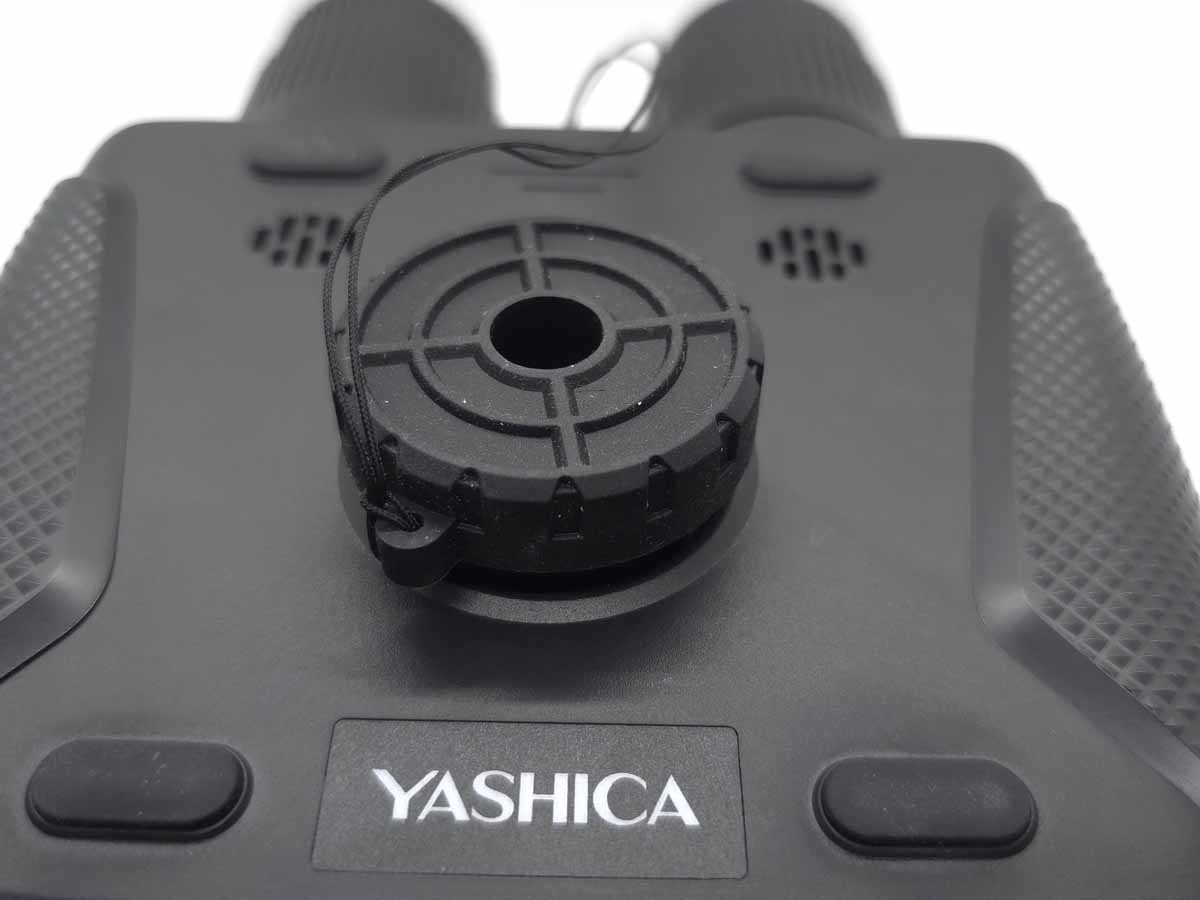
A rubber cover on the left side covers the micro-SD card slot, reset button, USB-C charging port, and charging LED indicator.
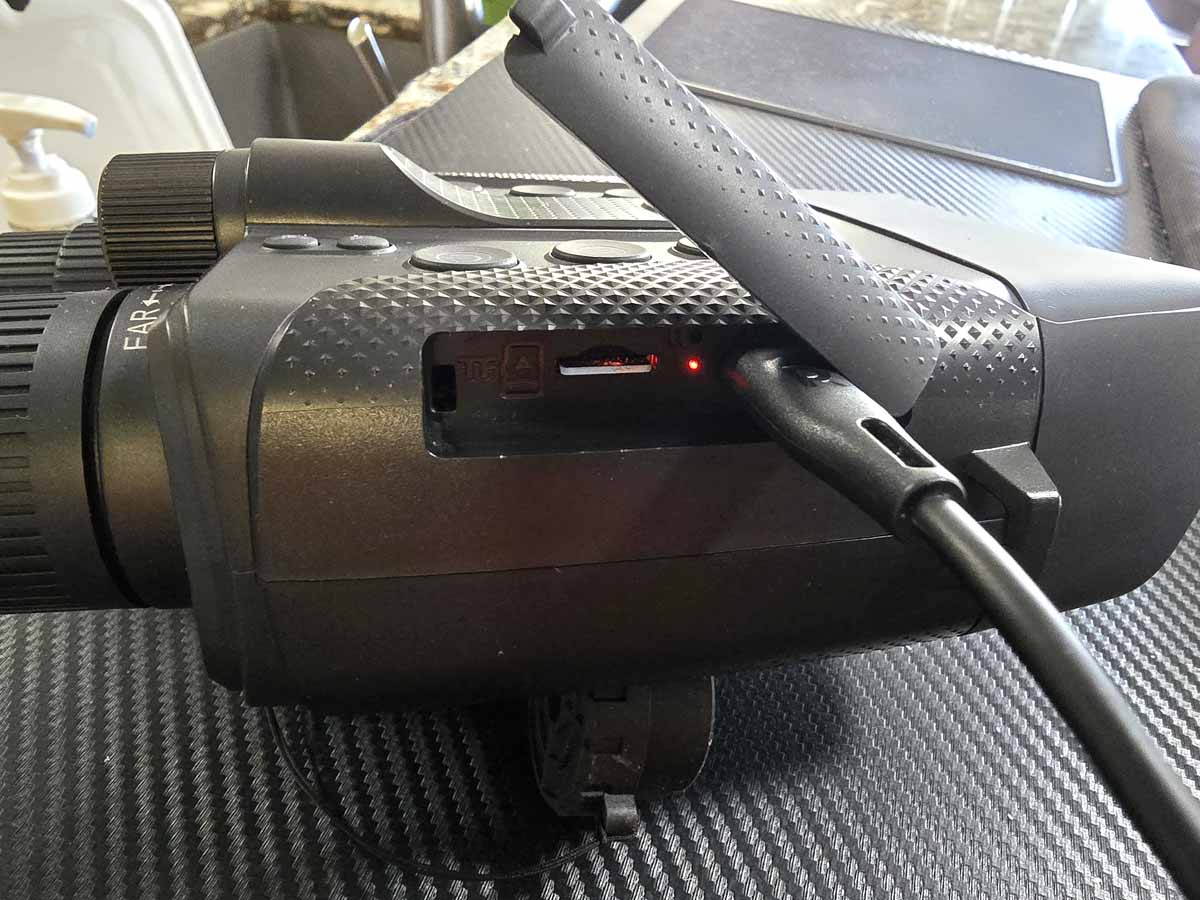
Here’s a look at the business end.
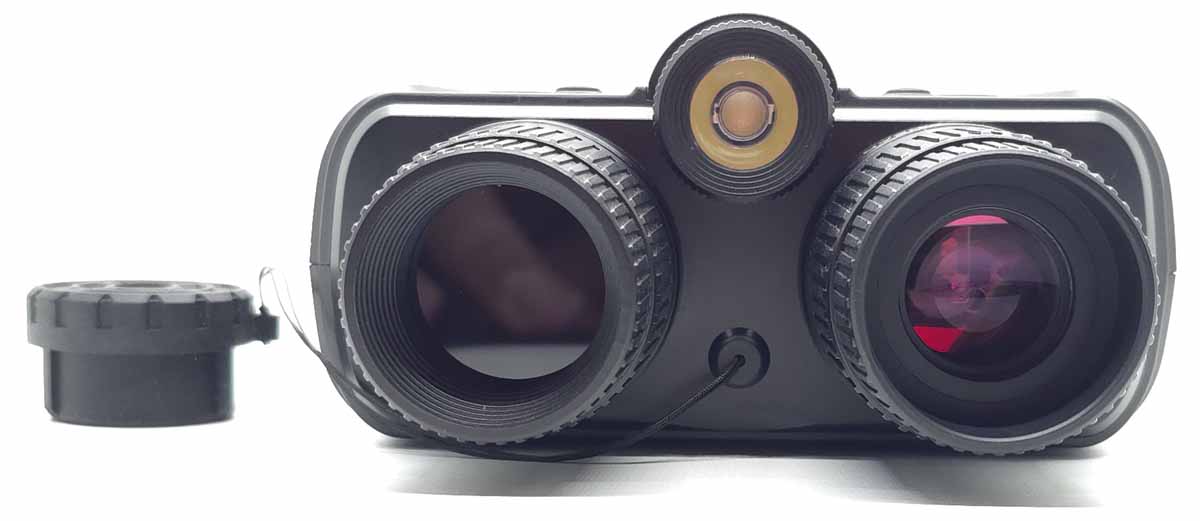
That circle at the top is a flashlight. It also doubles as an emergency strobe.
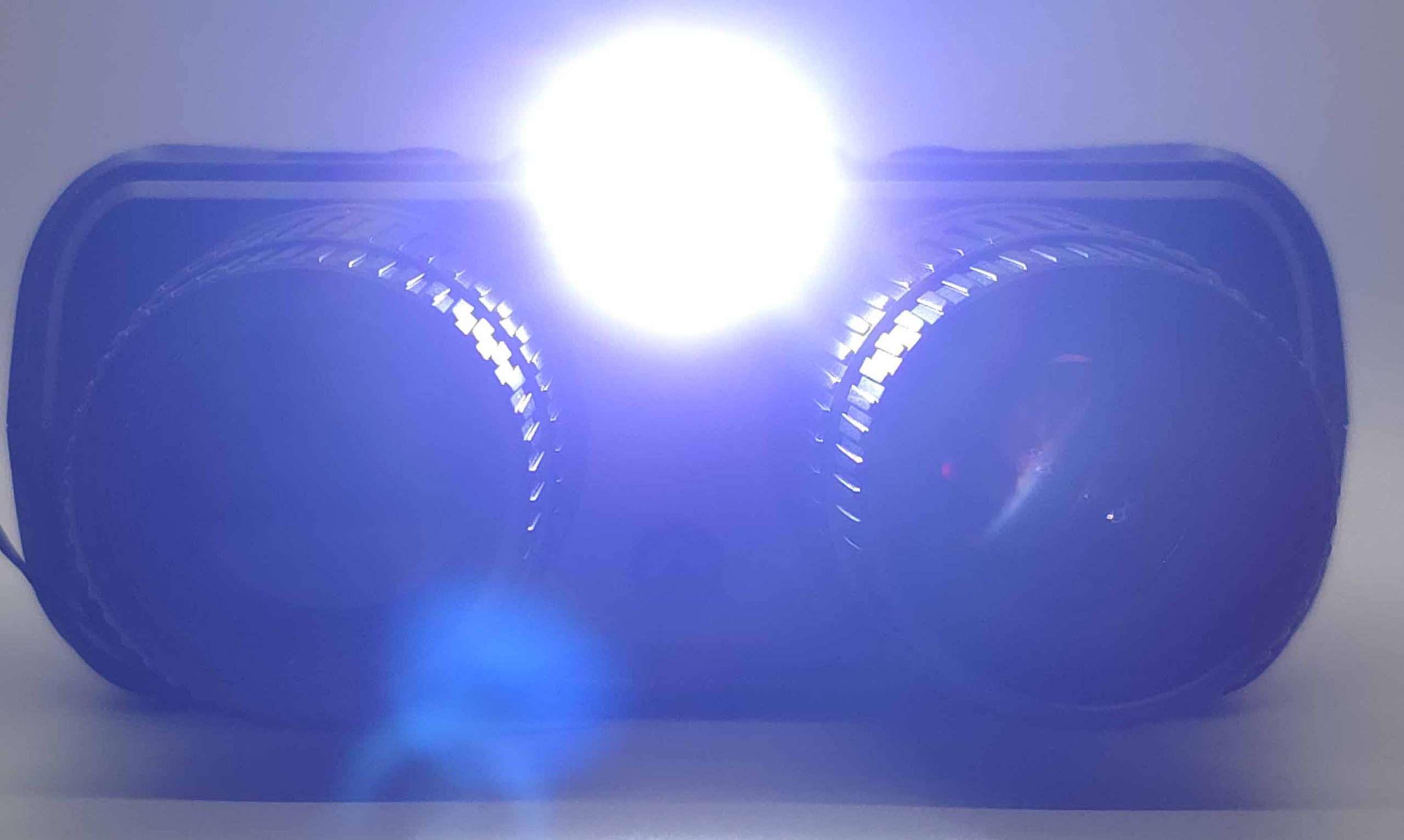
The right optic is the lens. The left one is the IR emitter.
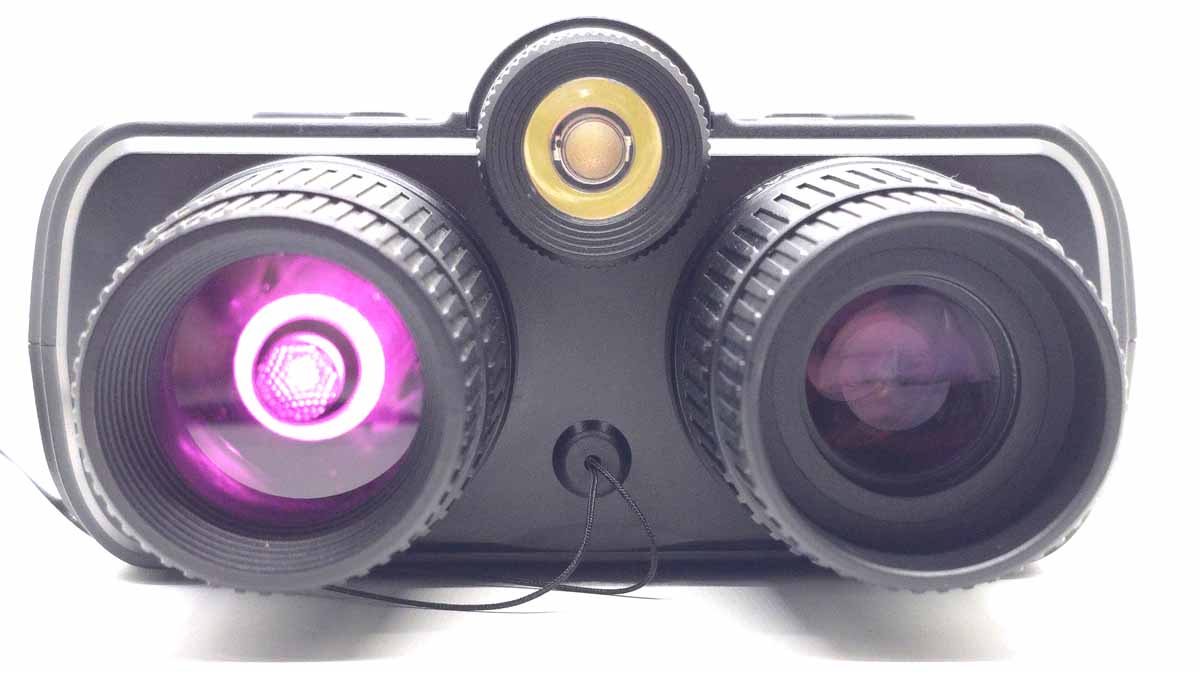
This shows the display in all three modes. From top to bottom, video mode, imaging mode, and playback. The icon in the upper left corner changes with the mode.
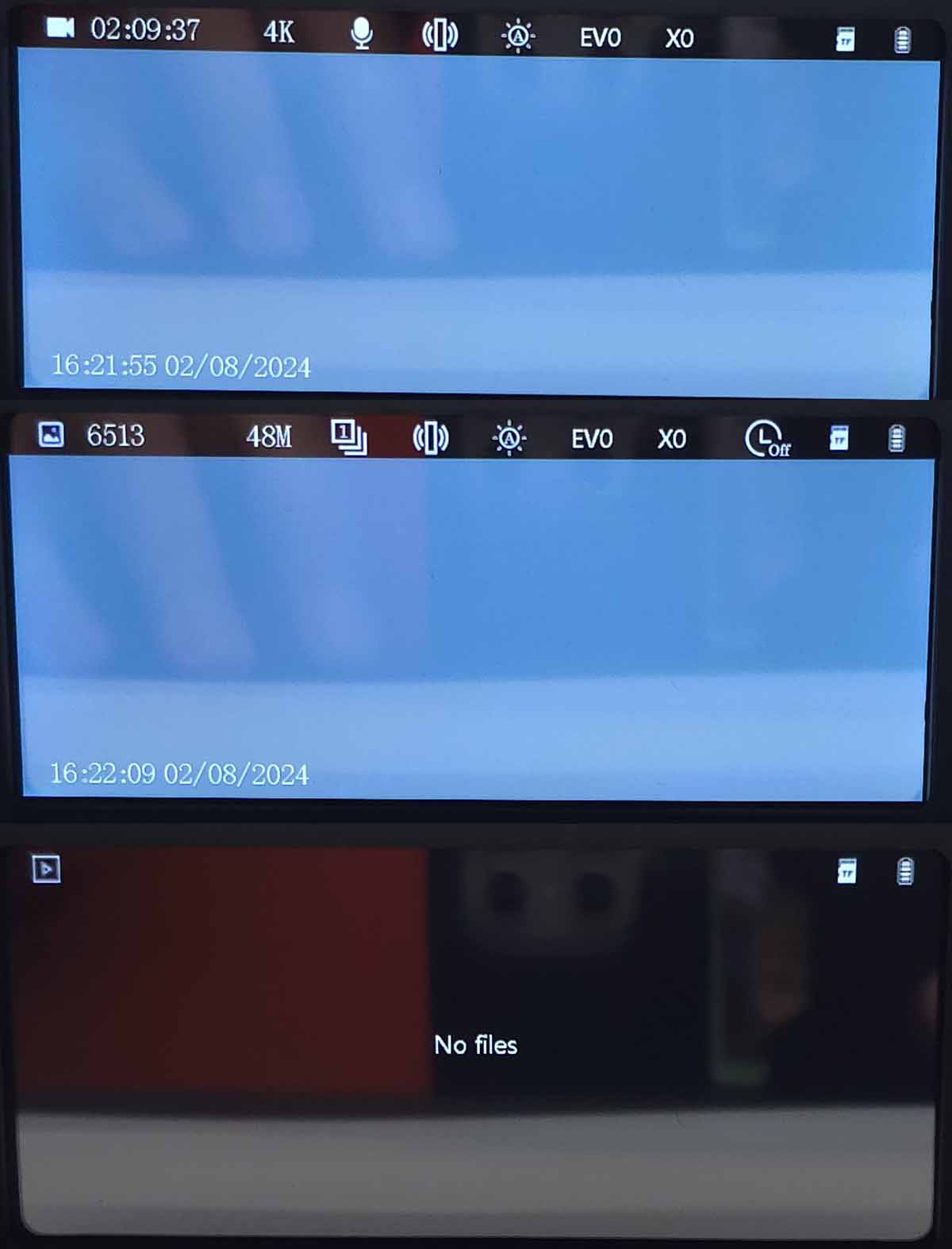
Pressing the M-button brings up the menu. Pressing the +/- scrolls through the items. Pressing OK enters that specific setting.
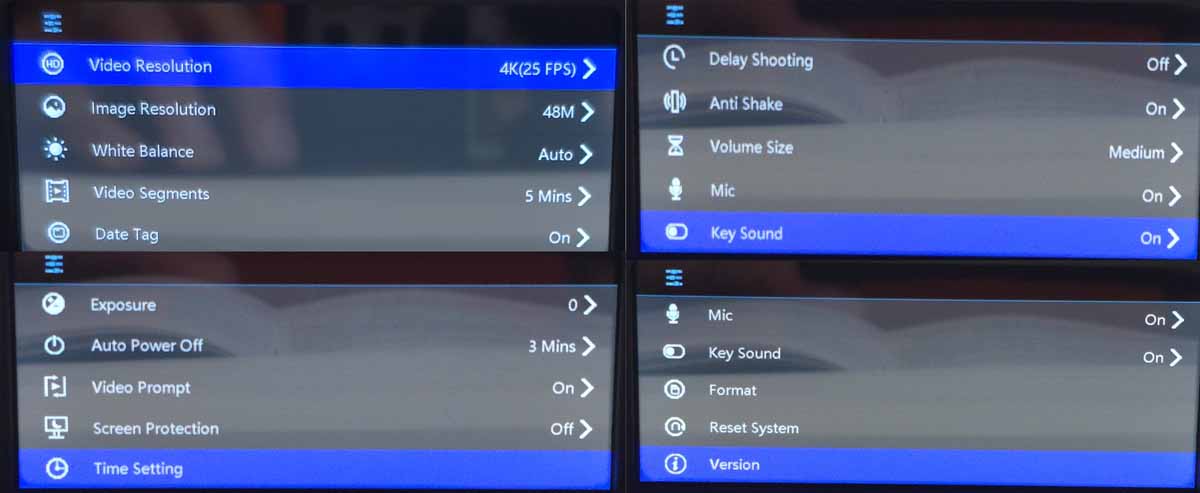
Vision captures video up to 4K, 25FPS, and images up to 40M.
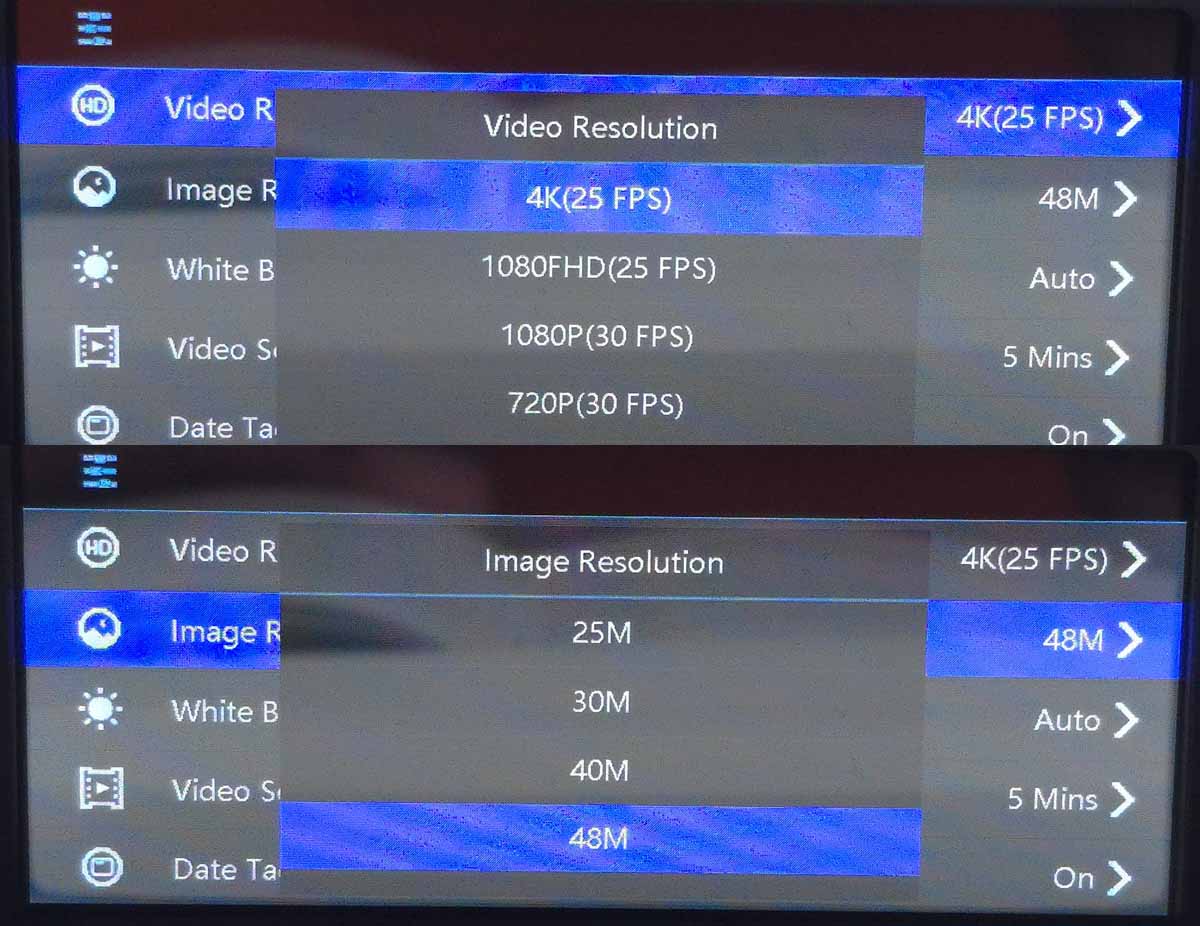
I got a kick out of the wording for setting the click and playback volume. “Volume Size” – ha!
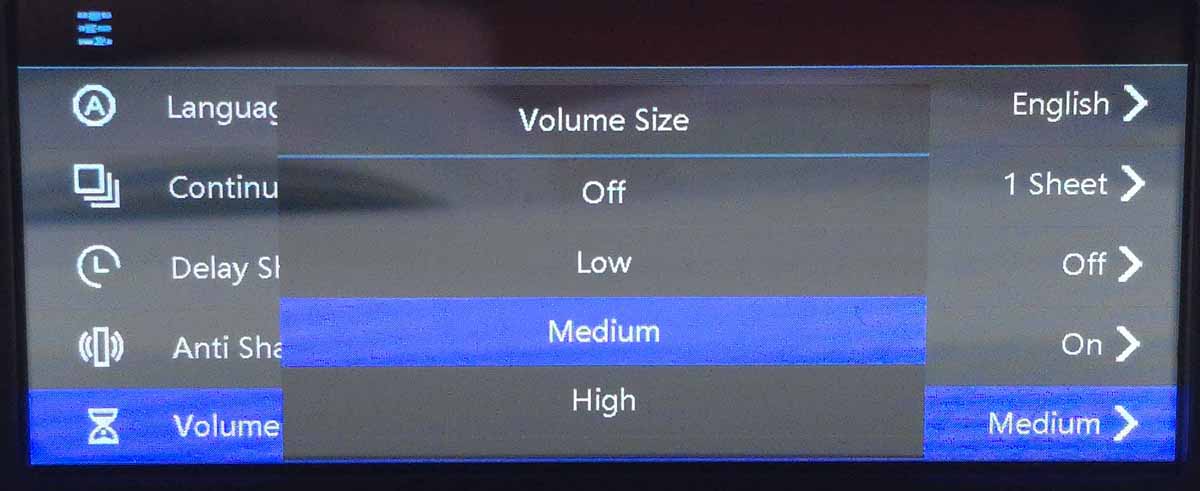
Setup
YASHICA Vision does not ship with a micro-SD card, so one of the first things you need to do is get one, up to 512GB. Insert that into the unit and charge it up and you’re ready for the dark.
Performance
Let me once again mention that I was sent a pre-production unit for testing. In my testing, I didn’t discover anything that screamed “pre-production”. The device was polished and functioned well. The biggest thing I noticed was slight differences in operating instructions in the user manual and how the unit actually works. For example, the manual describes a “flashlight” button and a “flashlight always on” button. They really turn the light on or turn it on in strobe mode. I guess the term “flashlight” means that it flashes. Hmm…
The manual also mislabeled the shooting confirmation button and completely ignored the IR emitter button. I hope that Yashica’s proofreading team goes over the manual from front to back before they start shipping. The specs on the website mention a 3x optical zoom and a 5x digital zoom. I found no optical zoom at all, but did find the 5x digital zoom.
After reaching out to YASHICA, I learned that there is no optical zoom. There is a fixed 3X magnification and 5X digital zoom.
YASHICA Vision has three operating modes. Mode one is designed for daylight use. It processes colors normally and doesn’t attempt to boost anything. To get better color rendering, slip the included IR-Cut filter over the lens in strong ambient light. In all modes, focusing is a manual process, twisting the focus ring on the lens. Getting sharp focus can be a little tricky in dark conditions, but it is doable.
The second mode is reduced light mode. In this mode, YASHICA Vision will boost the image, producing surprisingly accurate color when none is visible to the naked eye. Here is an image of a field shot in near-complete darkness. There was some light coming from a nearby building and a streetlight. Note that the time/date stamp in the lower right is optional and can be turned off.
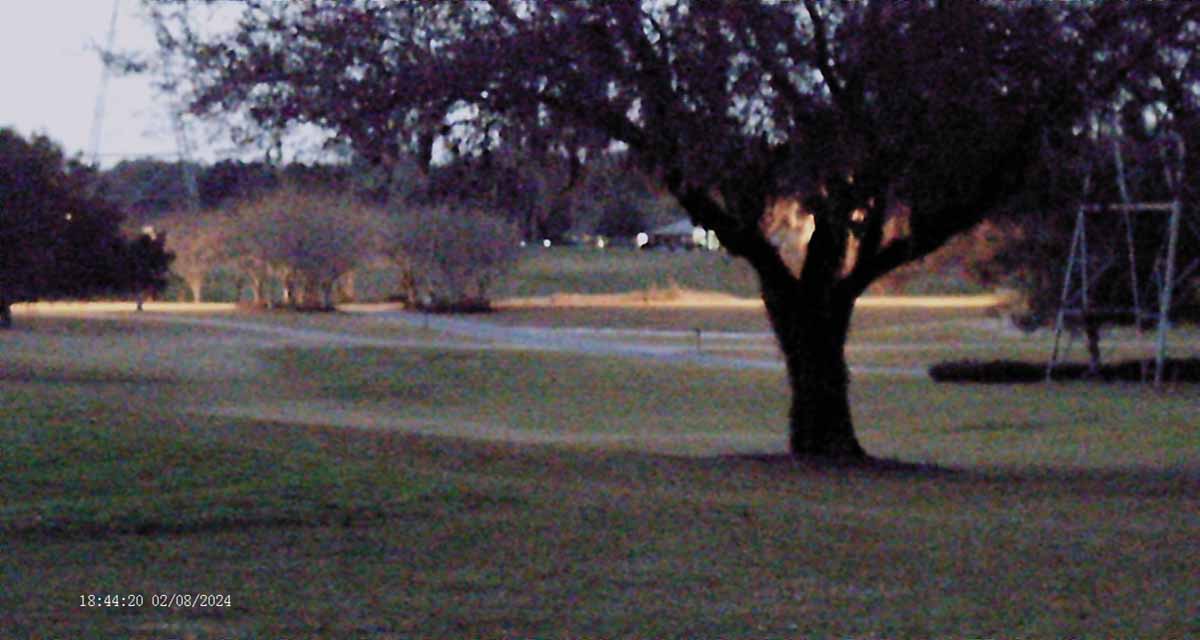
What struck me was the green of the grass. It was completely dark to my naked eye. Next up, I turned away from the light and took a photo of my completely dark golf cart. All it looked like was a large, rectangular blob. That it until I used YASHICA Vision.
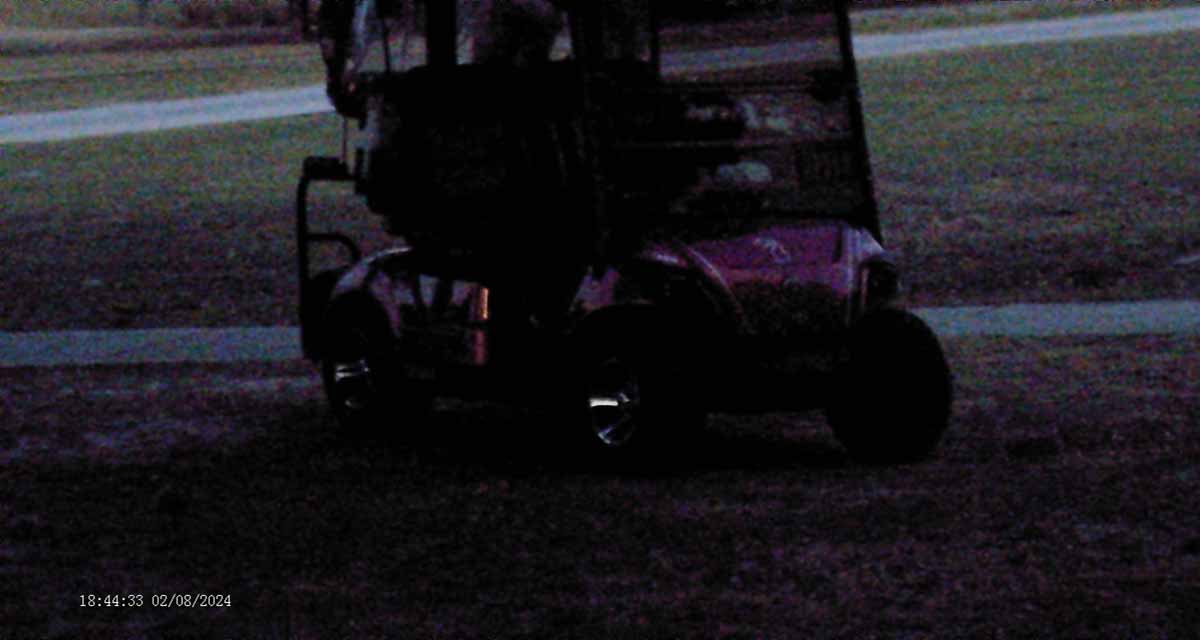
The only light was from a dark, moonless sky more than 30 minutes after sunset. Even though I could not perceive any color at all, YASHICA Vision easily rendered the red of my golf cart.
A group of golfers was trying to putt out on their last hole. The only way they could accomplish this was to turn their carts toward the green and turn the headlights on. YASHICA Vision produced a surprisingly good-quality video of that.
Finally, I turned YASHICA Vision up on a power tower and spotted an American bald eagle. The image looked more clear on the device. It is very difficult to hold it steady when shooting, even with stability control enabled. Stability control simply delays the shutter release so you can steady the camera. There is no actual image stabilization.
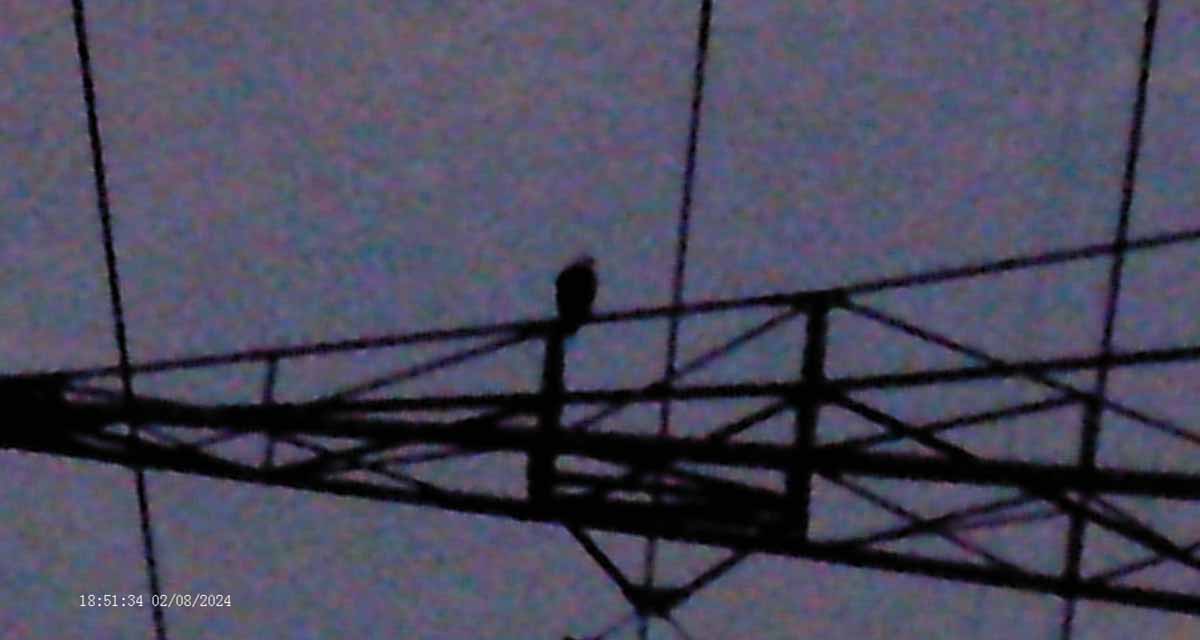
I decided to turn on the infrared (IR) mode and see how that performed.
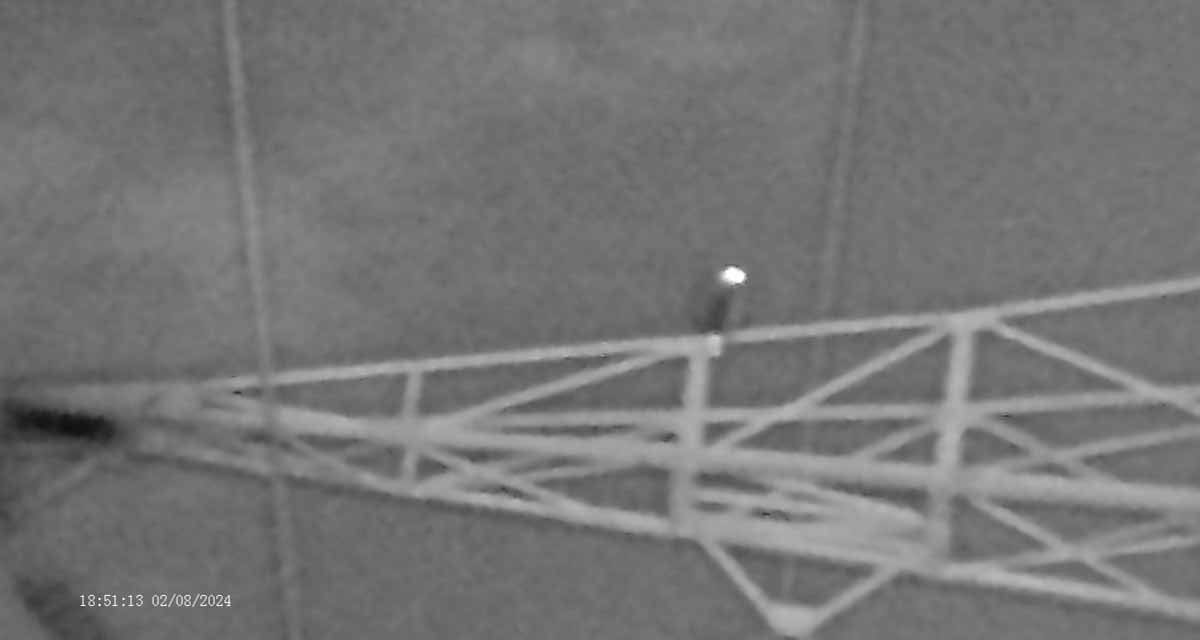
OK, if you check the timestamp, you can see that I shot this image first, but they were taken about 20 seconds apart. Again, it is a little blurry due to my instability. I didn’t have a tripod with me, but I would recommend one for photos.
I also shot a very brief low-light video of the eagle.
Next, I turned to another local resident, a nesting female great-horned owl. She was resting on her nest and was happy to pose for a few photos and a video.
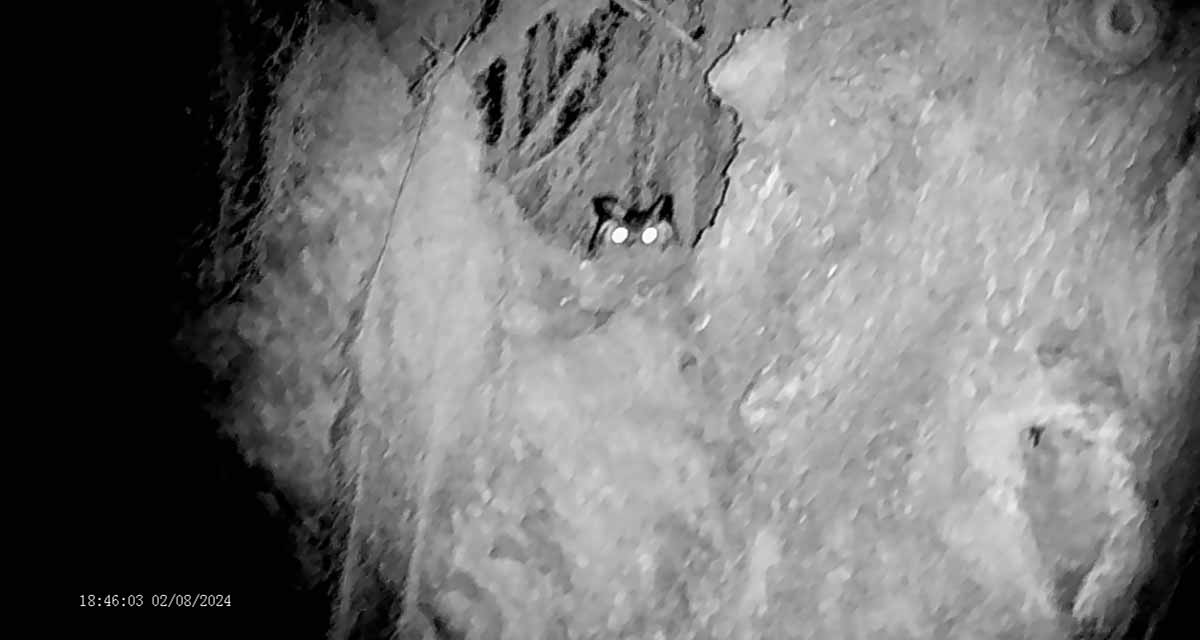
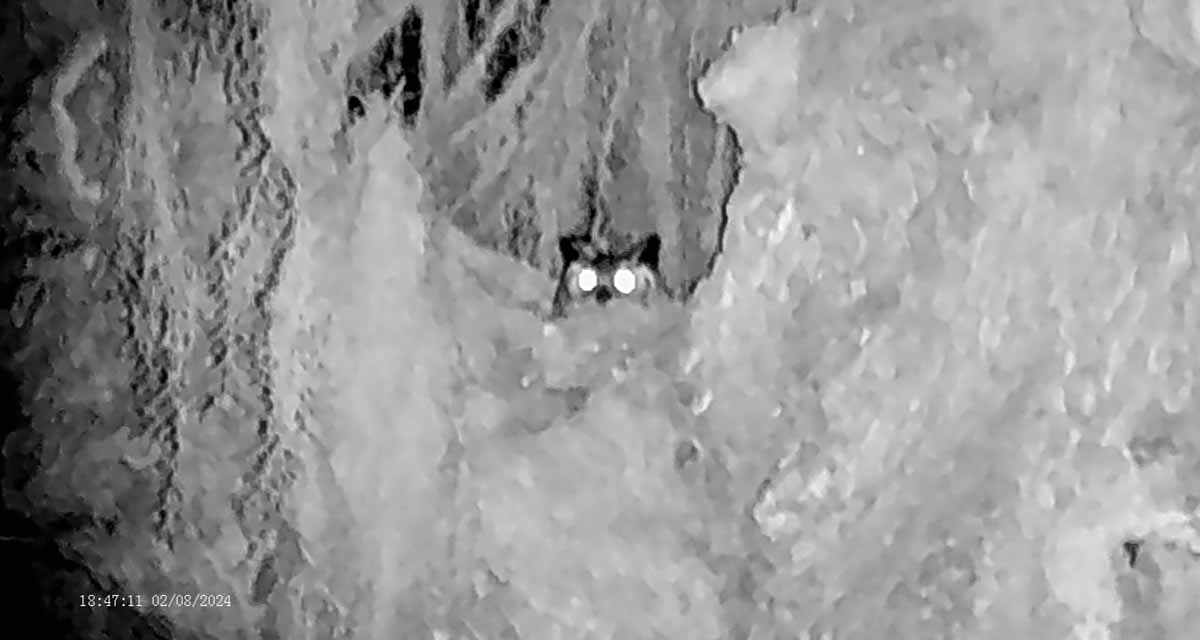
I was finally able to hold the unit steady.
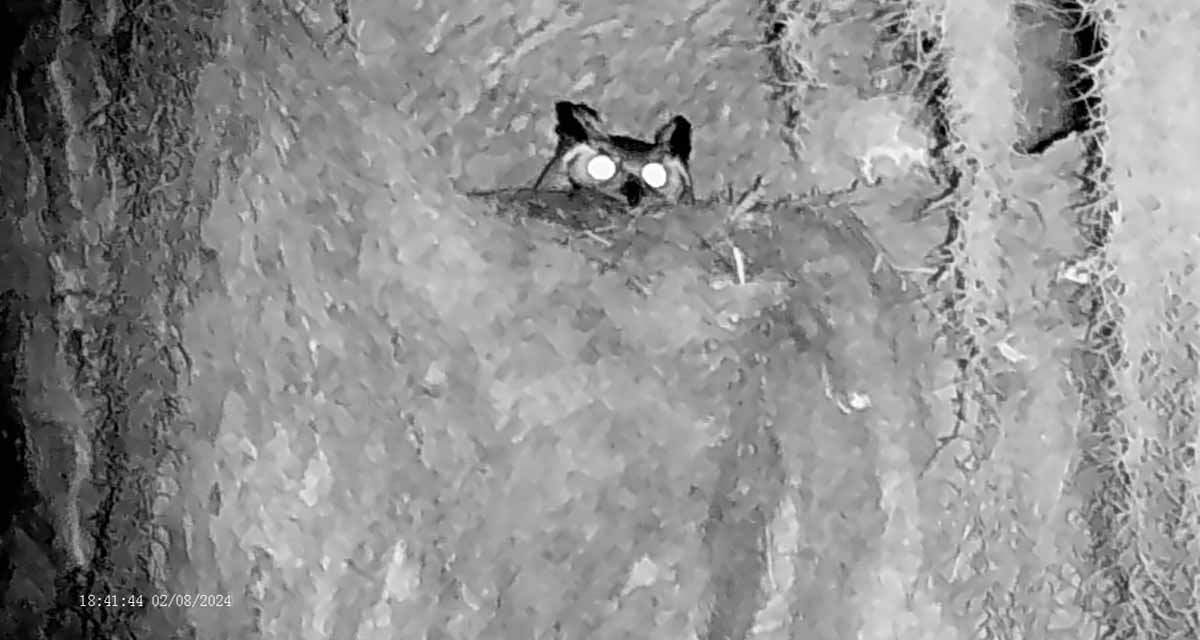
The video looks better.
After I returned home, I went out back and panned along the golf course behind our house.
One thing I noticed was the defined circular pattern of the IR illumination. That severely restricts the field of view. I was hoping for a wider dispersion of the IR light.
Some niceties are a five-step electronic zoom, five levels of screen brightness, and three levels of IR emitter power. The IR emitter surprised me. When I was shooting the cover photo at the top, I could really see the difference in illumination on the buildings that were hundreds of yards away. The power difference It isn’t evident when shooting close objects, but wow – switching from IR level 1 to level 3 makes a huge difference on distant objects.
One thing I’m not a fan of is the multi-function buttons. For example, holding the power button turns the unit on/off. Pressing it changes modes from video to photo to playback. Holding the +/- buttons zooms in/out. Pressing them brightens/dims the screen. The other buttons are press-only buttons, but holding them still yields a “click” but it doesn’t seem to do anything.
What I like
- It does a great job rendering natural colors in very low light
- The IR emitter throws IR light a long, long way
- The video quality is surprisingly good with little to no light
- It is relatively inexpensive
What I’d change
- It takes an extremely steady hand to get good photos with the IR emitter, image stabilization would be nice
- At closer distances, the IR emitter’s output is narrow, creating a circular effect
- Manually focusing on dark subjects can be tricky
- Manually focusing on moving subjects can be tricky
- I was not blown away by the image quality, even when I wasn’t trying to hold the YASHICA Vision when shooting
- The documentation needs to be reviewed and edited
Final thoughts
I needed to keep reminding myself that this was a pre-production unit. Everything worked as advertised. I wish the image quality was better, but then, I had to remember that I was shooting pictures in full darkness. I don’t think anyone will capture National Geographic-worthy nature photos with YASHICA Vision, but it does an admirable job capturing wildlife in otherwise impossible conditions. To my eye, the video was better than the images. Mounting YASHICA Vision on a tripod would make the video even better by eliminating handheld shakes.
So, is YASHICA Vision the perfect night vision solution? I’d say no. But…keeping in mind that it is inexpensive, does a very good job capturing natural colors in extremely low light, and produces decent-quality infrared video, it is certainly worth a look if you’re in the market for a device like this. It is a great tool to get a view of whatever critters you might have roaming around your home or out in the wilderness.
This Kickstarter campaign is scheduled to end on Tuesday, March 5, 2024, at 9:56 AM EST. Their initial funding goal was about $20,000. As of this writing, they are funded to over $750,000 and climbing.
Price: Rewards start at $139 with shipping planned for May 2024
Where to buy: Kickstarter
Source: The sample of this product was provided by YASHICA.



Gadgeteer Comment Policy - Please read before commenting
I can’t help but notice that you, like everywhere else, don’t publish any video of this thing actually doing night vision, somewhere without streetlights or the bright IR flashlight. Nor does anyone compare it to ANYTHING else, no technical details, nothing but hype. You could take any camera without an IR filter and do this with an IR flashlight.
Not sure I understand your complaint, Scott. The video of the owl was taken in darkness with zero external light from any light sources other than a night sky. There was no IR illuminator other than the one integrated in the Vision device. What are you looking for, a video of the device taking a video in the dark? And how would that work without external illumination?
The review shows unedited video and photos taken is near darkness without IR illumination as well as IR illuminated video. That’s what the device does. No hype, no misleading information.
Which Micro SD Card?!!!!! V90 required?
Garry,
Thank you for the very detailed and useful review!
I ordered the device via the crowdfunding perks and I did it with a less precautions that I used to, because the Yashica name recalled nostalgic memories (my father used an Electro 35 for many family photos). So I didn’t check it before. Now I know that it’s a HK based company that has no connection to the legacy of Yashica except they own the name.
I’ve also learned that their previous crowdfunding campaign’s product ended up with very mixed user experience because of the product quality.
Now your review gives some hope that this time I would get what I expected for the money.